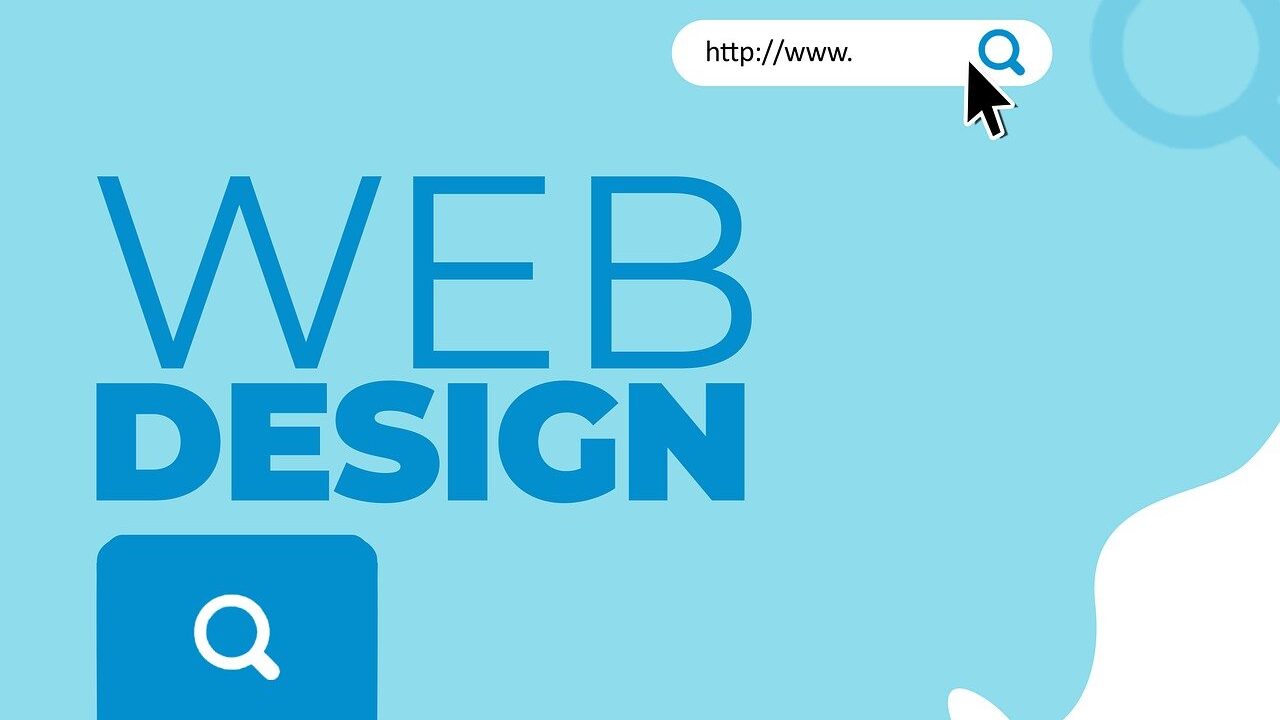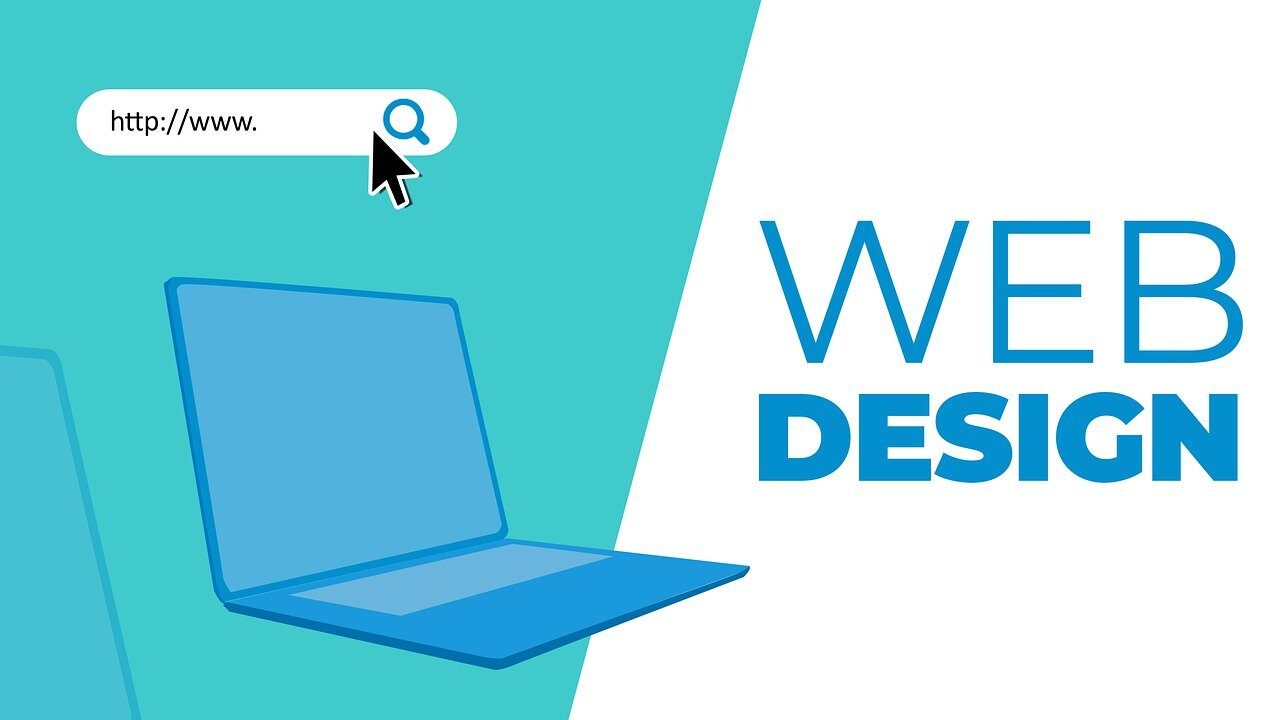There’s no way around it. It’s annoying when commercials interrupt your favourite show. You wake up one day to find your inbox full of promotional emails from brands you’ve never heard of.
The effectiveness of these mass marketing techniques has decreased. Today, customers determine whether to be advertised, what to purchase, and where to purchase it.
This is exactly why inbound marketing is so popular among brands.
What is Inbound Marketing?
An inbound marketing strategy is any marketing initiative that involves attracting a specific group of customers to your business. In contrast to traditional marketing avenues like TV, radio, and print ads, which target prospective customers irrespective of what they’ve demonstrated interest in, online marketing targets potential customers only after they’ve shown an interest.
Business methods such as inbound marketing draw in clients by supplying them with valuable content and relevant ads instead of interrupting them with unsolicited promotions.
By creating valuable content, you not only answer your customers’ questions but also solve their problems. You’re the one they turn to when buying time comes.
What Are the Stages of Inbound Marketing?
It is possible to do inbound marketing in a variety of ways. To achieve your goals, you need a strategy.
A successful inbound marketing strategy involves knowing what your customers want at a certain stage of their journey, which allows you to develop content that meets them where they are and takes them to the next level.
Inbound marketing involves the following four stages:
- Ensure your content attracts visitors
- Increase conversions from visitors to leads
- Create customers by nurturing leads
- Create a delightful customer experience
Ensure your content attracts visitors
Creating awareness of your business and its offerings is the first step of inbound marketing.
It involves creating content that is valuable to your audience and ensuring that it reaches them as effectively as possible.
This stage involves three major tactics:
SEO
You need to produce great content along with the necessary SEO optimization so it appears in front of the right audience at the right time.
It is generally considered good SEO practice to conduct keyword research and then to incorporate those keywords naturally within your content.
The two elements of inbound marketing collaborate to attract visitors to your website: quality content and SEO. Together, they are more effective than apart.
Content creation
To attract leads, you need to create insightful content and market it correctly.
By blogging, making videos and publishing e-books, guides and case studies, you will address the problems you see in the audience’s day-to-day lives.
Your website can perform better if you share your infographics along with other types of content across multiple channels. These videos boast high shareability, high engagement, and attractive design.
Social media
Your inbound marketing strategy should include social sharing and engagement. You can get tons of visibility for your content with SEO.
In today’s world, many people spend time on more than one social media platform. Create a social media marketing strategy for your company and work out which platforms are most relevant to your content creation, sharing and promotion needs.
In social media, you can find a variety of tools for engaging with the community.
Increase conversions from visitors to leads
If your brand or content interests visitors, what do you do with them?
You allow them to learn more.
In this stage, you obtain information on your visitors, so you can engage them and explain why your company is the right fit for them.
Converting visitors into leads can be achieved in three ways:
Opt-in forms
Get information from your visitors by using opt-in forms, such as their names, email addresses and other details. If you want your opt-in form to convert, make it prominent and simple to fill out. Having fewer fields or forms with multiple steps is preferable.
Calls-to-action
Visitors can be convinced to take action using a call-to-action (CTA). An effective call-to-action should be bold, short, clear, and action-oriented.
Be sure that your call to action is relevant to your text. Ideally, landing pages should include multiple CTAs to increase conversions.
Landing pages
When a potential lead clicks your link or ad, they will see your landing page. To get visitors to subscribe or sign up, this page needs to be optimized. The goal is to convert visitors into potential leads by giving them a call-to-action (CTA).
In most cases, create persuasive copy and offer something in return, such as a free product trial or e-book.
Create customers by nurturing leads
Getting leads is all about communicating with them so that you can persuade them to do business with you.
By identifying and reaching out to potential customers through various channels, you demonstrate exactly how your products or services can benefit them.
The following three tactics can help you:
Email marketing
By sending emails to your leads, you can reach out to them more effectively.
Subscribing to your e-mail list means that visitors want to hear from you. To prove to your clients that your company provides the solution they are seeking, you need to determine what they are looking for.
Using email marketing as a complement to social media is also a good idea. By sharing customer reviews and testimonials with your subscribers, encouraging them to follow your social profiles, and even targeting social advertising to them, you can reach your subscribers and increase their satisfaction.
Customer relationship manager (CRM) and marketing automation
Automating your marketing campaigns can increase effectiveness and save you time when nurturing leads.
Using CRM and marketing automation, you can organize leads, generate automated emails to them, and view data on how they engage with your business and communications. You will be able to convert more leads to customers with this strategy.
Create a delightful customer experience
Getting customers isn’t the only goal of inbound marketing. Having a satisfied customer who promotes your business is important.
When your customers are satisfied with your service, then they are more likely to leave great reviews and promote your business. You want to accomplish this step so you can ultimately attract more customers and visitors to your business.
To delight customers, brands can:
Live events and webinars
You can engage your customers through live events and webinars and keep them informed about new features and news.
By using channels such as Stormyard or Instagram Live, you can host product tutorials, Q&A sessions and more.
Customer support
To keep customers happy and satisfied with your business, you need to provide excellent customer support.
Be sure to respond to their concerns within a reasonable amount of time. Automated chatbots can reduce customer service errors.
Social listening
Your customers can be learnt more about by using social media.
Even though you may receive reviews or questions on your social profiles, make sure that you also consider the conversations that are occurring offline. Customers and followers may praise you, express concerns, or neither and not directly mention your social profiles. It could be that certain aspects within your industry are generating buzz. Stay on top of social media, let your customers know what’s happening promptly, and make sure they have a positive experience.
Surveys
Don’t hesitate to ask your customers if they’re not leaving reviews themselves. To get their opinions and thoughts on how to improve your services, use email, SMS, Facebook Messenger, Instagram Messenger, and other channels.
11 Reasons You Must Do Inbound Marketing In Your Business
A lot of business professionals don’t see the importance of marketing inwards. They prefer spending so much on ads that hardly convert. Don’t be swayed that this method is inefficient, instead discover more reasons you need to do it. These reasons include:
1. Affordability
Cost-effectiveness is a major benefit of inbound marketing. Marketing through inbound methods is more cost-effective than advertising and promotion. You might not need to spend much if you start by only creating blog posts for your website. CRM platforms are available for subscription, and you may have to pay a monthly amount for one like HubSpot as your business grows.
Your annual payment will, however, not exceed a set amount. As well as the expense, it will require your staff to devote time to creating content for your inbound campaign.
Lead nurturing can be effective at converting leads faster while saving money, as shown in the statistics above. Use various channels to nurture leads with inbound marketing. Using an email marketing strategy, you can nurture leads at a low cost. You can also use social media channels investing no money.
2. Information is Plentiful on Your Website
Inbound marketing provides a great deal of analytical information, which is probably the biggest advantage it has over traditional marketing.
The results of a particular campaign are difficult to measure with traditional tactics. In some cases, you may see an increase in sales during a certain period, but if you’re running multiple ads simultaneously, it’s impossible to tell which one caused the spike.
Different phone numbers will be used for different campaigns and different coupons will be used for different advertising campaigns. The problem is that these aren’t precise ideas, even if they’re better than nothing.
The advantage of inbound marketing, however, is that you can track and measure the details of each of your campaigns and the success of your overall strategy.
The data you can access from Google Analytics includes an overview of your most popular pages, the average time visitors spend on your site, and from where they come (search engines, social media, or links from other sites), among other data specific to your goals.
You can use this information to analyze the success of your individual campaigns as well as the overall effectiveness of your marketing mix. You can use this information to make informed decisions moving forward.
In addition, marketers who check their analytics at least three times a week are 20% more likely to have a positive return on investment.
Having said that, we recognize that not every marketer has time to consult an analytics platform multiple times per week. In situations like that, we suggest consulting an outside agency for help understanding how to make your company more successful online.
You can attract new clients for your company whether you handle the necessary changes yourself or you hire an expert to assist you.
3. Personalization
The ability to customize your marketing messages for different visitors and leads is one of the most recent inbound marketing developments.
You probably alter your ad content when advertising through traditional media channels based on each channel’s demographics. It would be necessary to change the copy and visuals in both magazines, for instance, to reach different audiences.
Inbound marketing allows you to do so much more than traditional marketing.
The marketing automation software you use will let you identify key information about site visitors like their location, industry, and company size. Following that, you can adjust the calls-to-action and other content.
Cookie technology enables you to track visitors’ activity on your site, such as what they do when they return. The marketing automation software could prompt your visitors to subscribe to your blog when they visit more than once a week, for example. This will alert the visitors when a new post appears on your blog.
By creating these kinds of customized calls-to-action and offers around your site, you can tailor your site experience to each visitor. A one-size-fits-all strategy, instead of providing a custom experience to every visitor, can be much less effective.
It is also possible to make this information available to your company’s sales team if it is a B2B model.
4. Leads Move Through A Sales Funnel
If you consider the last time you purchased something or signed a contract, it should come to mind. When you bought your television, did you visit the first store you came across or did you check out various options before deciding?
You probably did your research, if you are like most consumers.
In the age of online information, it is extremely rare for someone to spend money without doing a lot of research first. Many people begin by searching for general information about the products or services they need, then research websites of a few companies that can deliver them.
In this way, potential customers can compare the offerings of different companies. Reviewers and cost analysts, as well as other decision-makers on the buyer’s team, consult online reviews and analyze costs.
It is important to follow each of these steps – but if they don’t lead to more sales, they won’t help you.
To achieve this goal, you should consider what kinds of information your potential customers will need at each stage in the sales funnel.
You should make sure your pricing is visible for visitors at the bottom of the sales funnel, as well as general industry information for visitors at the top of the funnel.
A strong call to action (CTA) will also encourage visitors at the top of the funnel to move to the centre of the funnel, and encourage visitors in the middle and at the bottom of the funnel to convert using a contact form, signing up for a newsletter, or purchasing a product.
A well-designed funnel will help lead progression naturally-and that’s essential for generating ROI.
5. Creates a Cohesive Brand
It takes a combination of strategies, including SEO, content marketing, and social media, to achieve success with inbound marketing. Even though it may sound hard to do, you can integrate your branding efforts with the right planning.
The conventional channels require that you focus on one aspect of your business, such as pricing, promotions, or your values.
However, you can use inbound marketing to create content that resonates with all aspects of your business and allows visitors to focus on the ones they are most interested in.
Your company’s image will remain consistent if you keep the style and tone the same across all channels. Your brand is reinforced, and potential customers can reach you via whichever channel makes the most sense for them.
6. Builds on Itself
The main benefit of inbound marketing is that it mostly occurs on your organization’s own website. Your content can generate results long after it is published and optimized.
Traditionally, radio and TV advertising involves paying for your ad to run for a short period of time and a set number of times. Once your budget is spent, the ads stop running and the customers disappear. Even if leads and sales increase when your budget is spent, the ads stop running and customers disappear.
By contrast, when you publish pages on your website you only incur the cost of creating the content, either via your own employee’s time or by hiring an agency or freelancer.
It is completely free to host the content on your site for as long as you want. When your pages become popular in search engine results, and you share them on social media, they will continue to draw new readers even in the late hours.
You can also grow your regular visitor base as your company becomes better known. This means you will have a greater impact on every blog post you publish. Additionally, as your readers share your content with their friends and followers, your brand’s growth will be significantly accelerated.
Inbound marketing strategies are extremely effective when they provide these kinds of results without any ongoing fees. As a result, inbound marketing campaigns tend to produce higher ROI than outbound campaigns.
7. Strengthens Company Reputation
Whether you use descriptive language, facts, statistics, or something else that shows your credibility, your outbound ads must convey to your audience why they should buy your products. By contrast, inbound marketing allows you to demonstrate your value.
Your audience will associate your brand with high-quality blogs and articles, as long as you publish them.
As well as that, if you reach out to popular news sites and industry blogs, they might share your content or hire you to write for them.
Your company will be seen much more widely if it appears on a popular site than if it has its own website. In addition, if the host site is willing to feature you, its visitors will trust that it represents a reputable business, as long as the host site has a good reputation.
Your business will be recognized by your target audience as your growing presence on their websites, and knowing your business name is always helpful when building your brand.
You will also attain free publicity when the website owner links your content to the site you own. Having regular contact with high authority sites is a powerful link building strategy basis, you can begin to build relationships with writers and editors to reach more people and build more links.
The domain authority of your company will increase when you earn links from reputable sites. In turn, you will rank higher in search engine results and receive more traffic to your website.
8. Customers Connect On Their Terms
Advertisements for various products are constantly bombarding consumers. Companies constantly try to get consumers to pay attention to their ads whether they’re watching TV, listening to the radio, or flipping through a magazine.
Your audience will be distracted from what they actually want to see, and many people will use this time to refuel on snacks or have a conversation.
Your potential customers never interrupt you because they reach you on their terms with inbound marketing. Your company shares information about itself on your website and makes it easy to find in search engines like Google rather than through the publications they read and the TV channels they watch.
They will also naturally discover your website when they look for a product or service you offer. Your potential customers can access the information they need, when they need it, and learn as much as they want about your business.
Potential customers will benefit from a more informed purchasing decision without having to deal with a hard sales pitch. Nonetheless, your company will benefit from it, too.
It’s easier to decide which information about your company deserves a 30-second advertisement when you publish an abundance of information on your website. You can keep your customers informed of important details by quickly providing all of the information they might need on your site.
Paid advertising is the #1 most overrated marketing tactic, according to both inbound and outbound marketers; and if those who use traditional methods admit that inbound marketing is better, you can rest assured that inbound marketing is worth the investment.
9. Produces Qualified Leads
Using traditional marketing methods, consider how you can select your audience. Like a radio station, TV channel, or print publication, you may be familiar with choosing them based on the advertising departments’ description of their audience.
Advertisers can typically obtain a general description of an audience from a media company, generally by age, gender, and interests. Although they may write a perfect description, there’s no guarantee that their audience will be interested in what you have to offer.
However, inbound marketing allows you to reach people who are more likely to be interested in your products or services. Create articles that relate directly to the audience you are targeting, such as instructional articles, and you can naturally attract readers who are interested in the topics you cover by writing about industry trends.
There will be some who are not interested in your industry at all, and some will want information on a particular topic only. Online content does, however, offer a higher chance of generating leads than traditional advertising.
An additional benefit is that leads who discover your company through inbound channels can explore your website and gain a better understanding of who and what you do before contacting you. Your products and services will be immediately available to them, and they can make a purchase themselves or pass results on to other members of their company who can make a purchase.
Consequently, when a lead comes to you as a result of your inbound marketing campaign, you know they are already aware of what your company offers, and that they are interested in working with you.
10. Draws Site Traffic
Inbound marketing strategies include SEO and content marketing as two of their most important components. If you combine both, the result will be more qualified traffic to your website that you will be able to convert into customers or leads. They refer to you when you create informative and in-depth pages optimized for keywords that relate to your target audience.
Your chances of ranking for specific keywords and phrases increase as you create more content. Considering that pages (and not your entire site) rank in search engines like Google, you can continue researching and writing blog posts, article pages, and other types of content to rank for more queries.
The more terms you rank for, the greater the traffic you get. This means that as you improve the strategy, your traffic will continue to increase.
However, traffic does not always translate directly to revenue — but the more visitors your website attracts, the more potential customers will come into contact with your company.
With SEO, you are likely to receive qualified leads from a high percentage of those visitors.
11. Strengthens Relationships
Marketing strategies are often used purely to generate sales for companies. Inbound marketing allows your business to build relationships with its customers as well as achieve this goal.
To get the attention of your audience, instead of employing sales pitches, provide them with information on the products or services that you offer. Perhaps your company sells auto parts, in which case you could create a template for simple tasks like changing air filters, oil, or burned-out tail lights.
Depending on your industry, you may need to conduct in-depth research to provide relevant information. Nevertheless, as long as you demonstrate that you are willing to help potential customers, instead of just selling to them, it will be worth the effort.
By doing this, visitors will perceive you as both a company and a trusted resource. It is common for them to ask additional questions in the comment sections of your blog.
Respond promptly to any questions or feedback they may have, and try to address any concerns they may have. Engaging your customer base is a great way to improve sentiment towards your brand.
You can also show your clients that you’re a leader in your industry after you close sales with inbound strategies like blogging. You can increase your chances of attracting clients when you regularly post informative blog posts and articles on your site. The result might even be them buying from you again.
Conclusion
There is no point in blindly bombarding people with promotional messages hoping to find a lead. Utilize inbound marketing to attract customers.
Rather than boosting sales temporarily, inbound marketing aims to establish long-term relationships and build company credibility.





